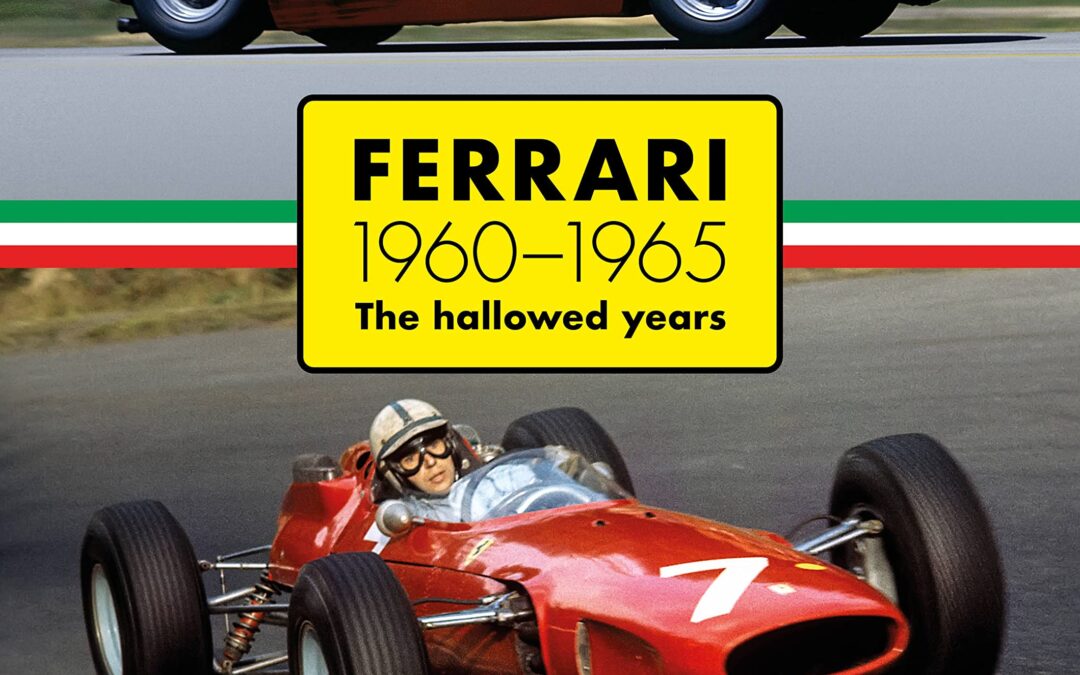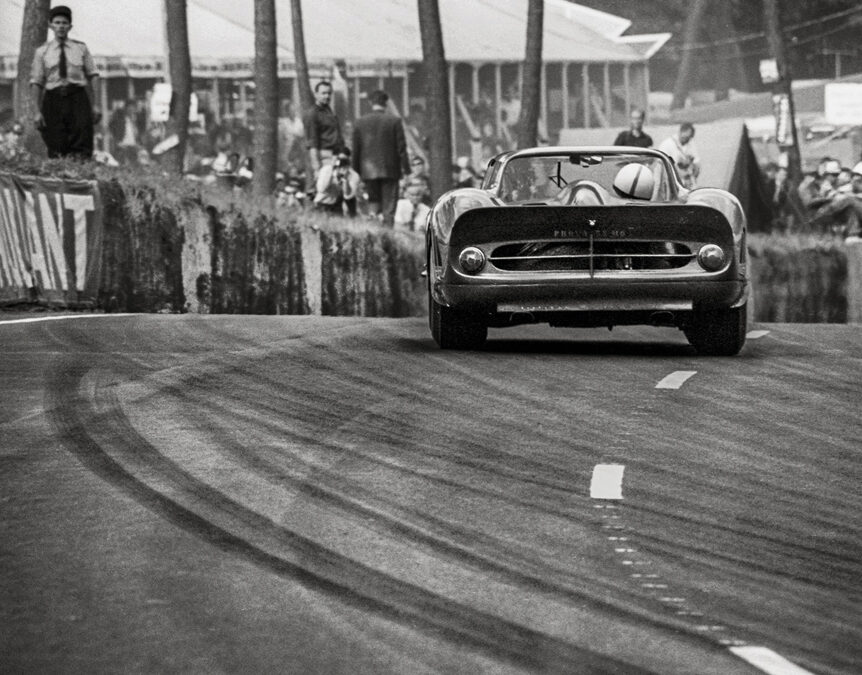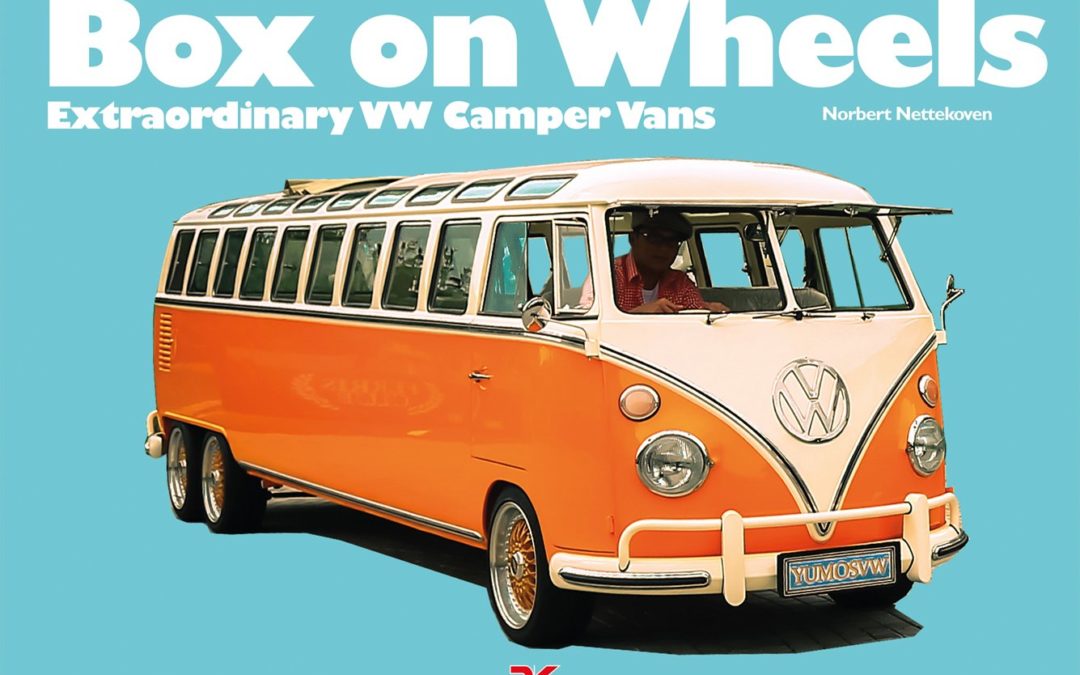
Dragged out of retirement, Patrick O’Sullivan takes on his most important challenge yet. The Office has been shut down, the nation’s political atmosphere is toxic, and the very foundations of American Democracy are being threatened not only by a foreign power, but from within.
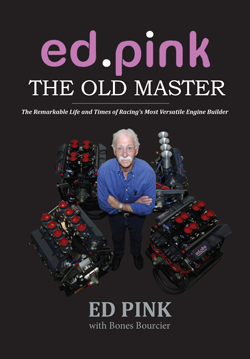
SIGNED BY ED PINK
The Remarkable Life and Times of Racing’s Most Versatile Engine Builder
Ed Pink’s gift for designing and building engines made him a motorsports icon. His handiwork has powered, among others, drag-racing superstars Don Prudhomme and Tom McEwen, Indy Car legends Al Unser and Tom Sneva, sports car heroes Bob Wollek and Brian Redman, and USAC champions Tony Stewart and Kasey Kahne.
But this is not a technical book. Pink began his long-awaited autobiography with one goal: that it would be more about people than engines.
Mission accomplished, yet again, for auto racing’s Old Master.

MOTOCOURSE celebrates its 44th year of publication – and yet again what a year it was for motorcycle racing!
In a thrilling MotoGP season, Marc Marquez and Honda were again the dominant force, with customary brilliance, he romped to his sixth MotoGP title. Other riders occasionally denied the Spanish tyro. The Ducati pair of Andrea Dovizioso, and Danilo Petrucci, along with Yamaha’s Maverick Vinales and Suzuki’s Alex Rins all took to the top step of the podium in a close fought battle for supremecy throughout the whole of the MotoGP field.
Once again, Valentino Rossi defied the years to remain at the sharp end of the field, whilst the future for Yamaha may have emerged in the shape of the 20-year old French sensation Fabio Quartararo, eagerly seeking his first MotoGP win.
Editor Michael Scott provides a no-holds-barred assessment of all the aspects of a compelling season’s action.
MOTOCOURSE alone has full coverage of the support classes, Moto2 and Moto3, where Alex Marquez was looking to clinch the Moto2 crown at his fifth attempt, whilst Lorenzo Dalla Porta, Aaron Canet and Tony Arbolino hotly disputed the Moto3 title.
In World Superbikes, Kawasaki’s dominance was challenged by Ducati’s Alvaro Bautista, with Jonathan Rea eventually managing to retain his championship title for the fifth successive year, ahead of the chasing pack including British favourites Leon Haslam, Chaz Davies and Yamaha’s Michael van der Mark.
No book covers the motorcycle racing world in as much detail as MOTOCOURSE, which, in addition to the two major world series, reviews the unique challenge of Isle of Man TT races, The World Supersport Championship, The British Superbike Championship and the AMA USA Superbike series.
Incredible value for money, with 328 large-format pages, bursting with over 450 stunning colour photographs from the world’s finest photographers, MOTOCOURSE covers it all. No wonder MOTOCOURSE is regarded worldwide as ‘The Bible of Motorcycle Racing’.
Autobooks-Aerobooks 2900 W. Magnolia Blvd. Burbank, CA 91505 (818) 845-0707 Hours: Tuesday-Friday 10:00 AM – 6:00 PM Saturday 10:00 AM – 6:00 PM Closed Sunday and Monday Accept Credit Cards gift cardYES, We have Gift Cards - Click Here AUTOBOOKS IS OPEN...
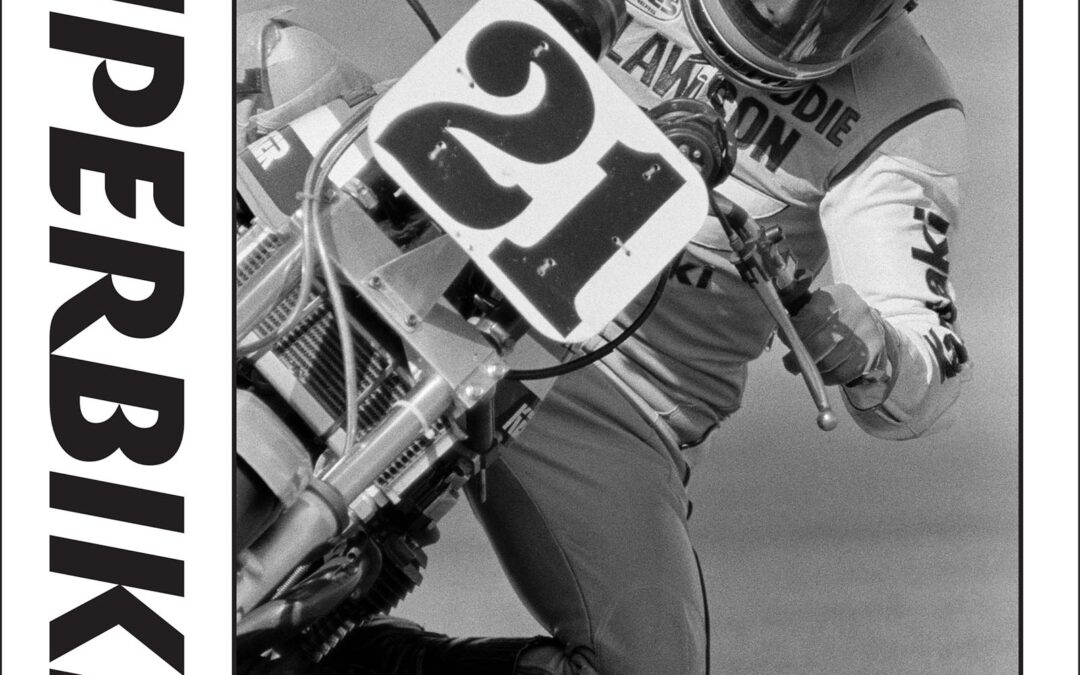
Superbike racing is a global business built on decades of dedicated partnerships among manufacturers, promoters and teams resulting in successful domestic and international championships. In the mid-1970s, however, this popular category of production-based four-stroke competition was in its infancy.
In “Superbike: An Illustrated Early History,” renowned technical writer Kevin Cameron and
acclaimed photographer John Owens chronicle the transition from the twin-cylinder BMWs,
Ducatis and Moto Guzzis set against wobbling and weaving first-generation Japanese fours to a
second wave of more raceworthy machines that ultimately led to the sportbike revolution.
Owens shot the black-and-white photographs published in this beautifully designed and
produced 192-page hardcover book at five of the tracks that dotted the U.S. motorcycle
road-racing landscape at the time: Daytona International Speedway, Bryar Motorsports Park,
Laguna Seca Raceway, Pocono International Raceway and Road America.
Eddie Lawson, Wayne Rainey and Freddie Spencer—three Americans who went on to win a
combined 10 250cc and 500cc Grand Prix world titles—figured prominently in the “sit-up” era of
AMA Superbike. Throughout the book, Cameron and Owens provide insights and images of
riders, crew members and machines difficult to replicate in today’s veiled paddocks.
“The desire to go fast, brake, turn and accelerate isn’t that complicated,” Cameron writes in the
opening pages. Yet this book clearly illustrates and uniquely explains the challenges that all
involved—from the manufacturers, to the teams and, ultimately, to the riders—faced in their
attempts to achieve those goals.
ABOUT THE AUTHORS
Kevin Cameron is a former tuner specializing in racing two-strokes and is widely recognized for
his ability to reduce deeply technical subjects to their elemental form. Kevin has written for
numerous publications. He has also authored several books on engineering and performance.
John Owens has photographed automotive and motorcycle competitions since 1975. John has
covered a range of events in the U.S., Europe and Japan, including the 24 Hours of Le Mans,
Indianapolis 500 and Daytona 500, as well as the Isle of Man Tourist Trophy races.

What they didn’t want you to know
“We all watched in shock and disbelief when Challenger was lost. Probably no one felt more disappointment and regret than Allan McDonald, who had warned us not to launch that day. His story tells of loss, grief, and the eventual rebuilding and recovery.”–Robert “Hoot” Gibson, former Space Shuttle pilot and commander
“A major contribution to a difficult episode in the history of human spaceflight.”–Roger D. Launius, Division of Space History, Smithsonian Institution
“McDonald tells the heartbreaking tale of how he saw his words of warning ignored, and the fateful consequences of that decision.”–Donald C. Elder III, Eastern New Mexico University
On a cold January morning in 1986, NASA launched the Space Shuttle Challenger, despite warnings against doing so by many individuals, including Allan McDonald. The fiery destruction of Challenger on live television moments after launch remains an indelible image in the nation’s collective memory.
In Truth, Lies, and O-Rings, McDonald, a skilled engineer and executive, relives the tragedy from where he stood at Launch Control Center. As he fought to draw attention to the real reasons behind the disaster, he was the only one targeted for retribution by both NASA and his employer, Morton Thiokol, Inc., makers of the shuttle’s solid rocket boosters. In this whistle-blowing yet rigorous and fair-minded book, McDonald, with the assistance of internationally distinguished aerospace historian James R. Hansen, addresses all of the factors that led to the accident, some of which were never included in NASA’s Failure Team report submitted to the Presidential Commission.
Truth, Lies, and O-Rings is the first look at the Challenger tragedy and its aftermath from someone who was on the inside, recognized the potential disaster, and tried to prevent it. It also addresses the early warnings of very severe debris issues from the first two post-Challenger flights, which ultimately resulted in the loss of Columbia some fifteen years later.
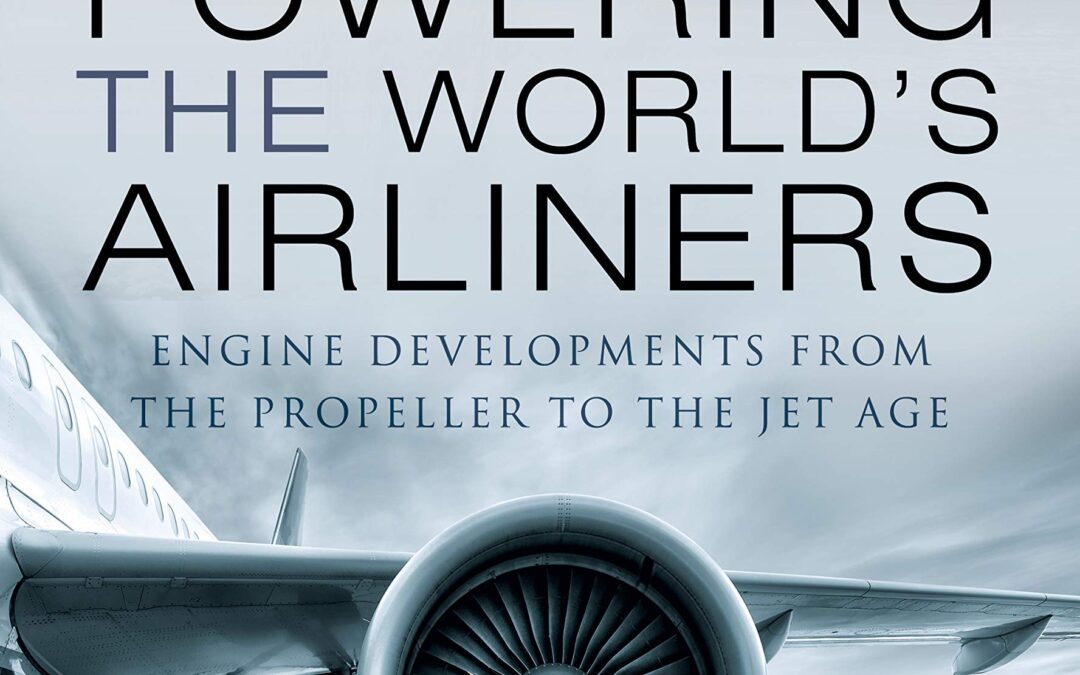
The first efforts of man to fly were limited by his ability to generate sufficient power to lift a heavier-than-air machine off the ground. Propulsion and thrust have therefore been the most fundamental elements in the development of aircraft engines.
From the simple propellers of the first airliners of the 1920s and 1930s, to the turboprops and turbojets of the modern era, the engines used in airliners have undergone dramatic development over a century of remarkable change. These advances are examined in detail by aeronautical engineer and author Reiner Decher, who provides a layman’s guide to the engines that have, and continue to, power the aircraft which carry millions of travelers across millions of miles each year.
Reiner Decher also looks at the development of aero engines during the Second World War and how that conflict drove innovation. He also explains the nature of wing design and how they provide lift and of the considerations of airflow over their surfaces, from the early days of the twentieth century to the present.
To enable an easy understanding of this intriguing subject, Powering the World’s Airliners is profusely illustrated, transporting readers back to the time of each major development and introducing them to the key individuals of the aero industry in each era.
After reading this comprehensive yet engaging story of the machines that power the aircraft in which we fly, no journey will ever seem quite the same again.
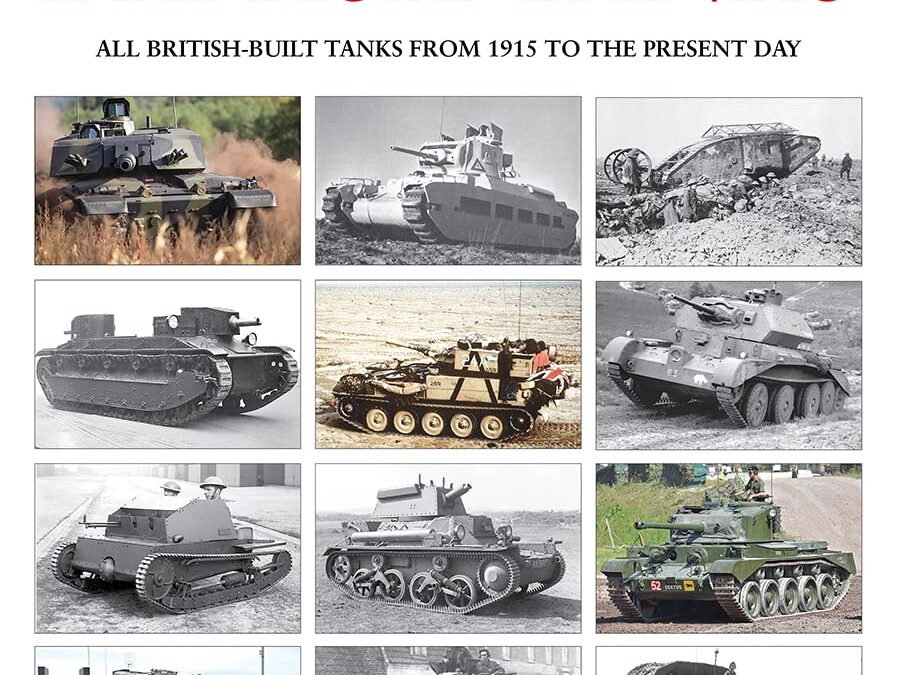
As the nation that conceived the first tank more than a hundred years ago, Britain has a long and fascinating series of tank designs to its credit. Despite a period of apathy from the relevant authorities about the value of tanks, which led to its grateful reliance on American-made models during the Second World War, Britain bounced back to become an important innovator once again – notably with the development of the still-secret Chobham armour for the 1980s. In addition to the outstanding successes of British tank design, there were many unsuccessful designs along the way. The sheer quantity of proposals, prototypes and production models is bewildering to all but the non-specialist, and yet fascinating to those who persevere in their search for information. The Complete Catalogue of British Tanks therefore aims to make the essential information available in readily digestible form, as well as to suggest further sources of information for those who wish to take their interest a stage further. Completed with useful Appendices about the variety of engines used in British tanks, and about the multiple main weapons that have been employed, this book will be a rapid-reference standby for anyone with an interest in the story of these armoured fighting vehicles.
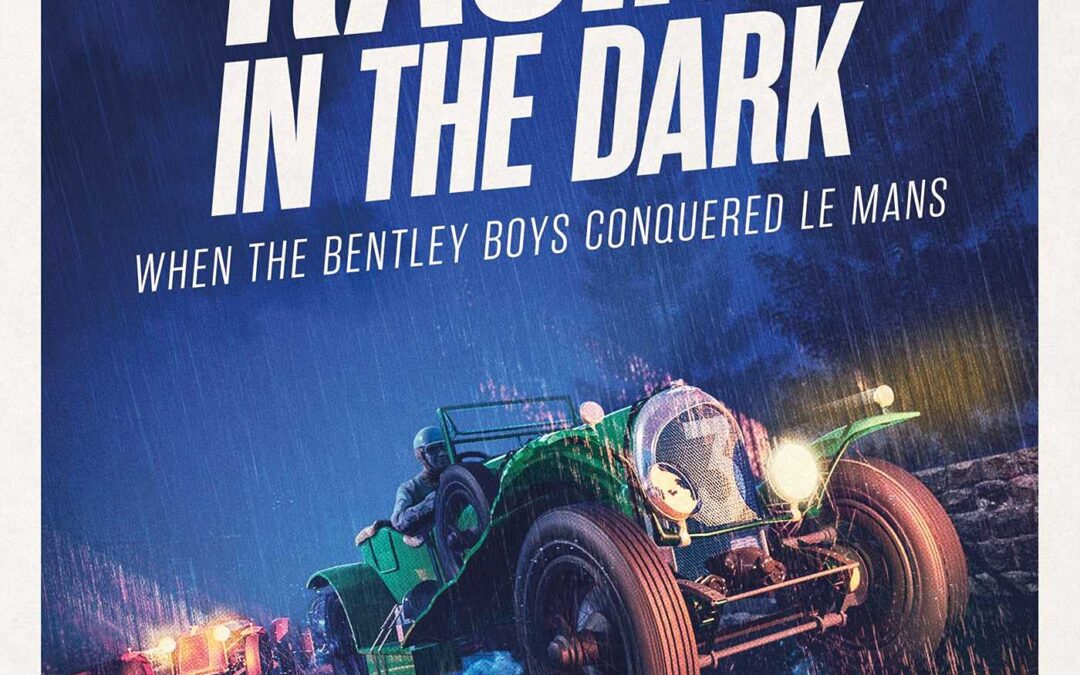
‘Glorious…gripping and sometimes tragic’ Robbie Coltrane
The inspirational story of the Bentley Boys and Le Mans – the race they made their own.
Le Mans, 1927. W.O. Bentley peered into the dusk. His three cars, which had led from the start, were missing. Two years running he had failed to finish. Once again he was staring into a void. Racing, his shareholders told him, was a waste of money. This race looked like being his last.
W.O’s engineering skills had been forged on the Great Northern railway and in the skies of the First World War, where Bentley-powered Sopwith Camels took the fight to Germany’s Red Baron. Determined to build and race his own cars, he assembled a crack team from all strata of 1920s Britain, from East End boys Leslie Pennal and Wally Hassan to multi-millionaires Woolf Barnato and Tim Birkin, men in search of adventures to blaze their way out of the dark past.
They dedicated themselves to building the perfect road and racing car. In the hayloft above their workshop, the first Bentley was born and soon it was the car of choice for the fast-living upper classes. They raced at the fashionable Brooklands circuit and then set their sights on the fledgling 24 Hours Le Mans race. An audacious goal for a British car, yet the Bentley Boys rose to the challenge. But on that night in 1927, after the biggest crash in racing history claimed their cars, could they still pull it off and put British motor racing on the map?
In the 1920s, Bentley Motors burned brightly but all too briefly; yet its tale, filled with drama, tragedy, determination and glory still shines a century on.

This is the story of Stephen South, a young British racing driver in the Seventies who seemed set for the glory that ultimately fell instead to rival Nigel Mansell.
Where one went on to become one of the nation’s most loved characters and the World Champion in 1992, the other’s career faded to a footnote in the cruellest circumstances.
This is a multi-faceted tale of struggle, success, disappointment, controversy, the continuous battle for funding and recognition and, ultimately, heartbreak.
Famously reticent even from his early schoolboy days as a British karting champion, South now talks openly about his career with first-time author Darren Banks. Many leading figures from the world of motor racing are woven into the narrative, which traces the turbulent era of the Seventies, the trials and tribulations which only strengthened South’s quiet yet indomitable resolve, and how close he got to his dream of racing in F1 after a winter of hugely promising test work with Colin Chapman’s Lotus team in 1979.
And for the first time he discusses with chilling candour the events that saw him forced to race in the North American Can-Am sportscar series instead of F1 in 1980, the horrific accident that befell him at Trois-Rivieres in Canada, his physically and emotionally painful recovery in a hospital on the other side of the world, his eventual return home and the subsequent trauma of having to deal with a career now broken and a life permanently altered.
Those key figures recall with affection – with a couple of exceptions – their experiences of working with or racing against this vastly underrated driver who, had he been dealt a better hand by fate, would surely be remembered alongside contemporaries such as Mansell and fellow World Champion Keke Rosberg as one of the leading F1 drivers of his era.
Profusely illustrated with numerous previously unseen photographs from professional archives and personal collections, THE WAY IT WAS – The story of a British racer who was too fast to be forgotten, is a gritty tale of the darker side of a sport when it fails to deliver a racer’s just deserts.
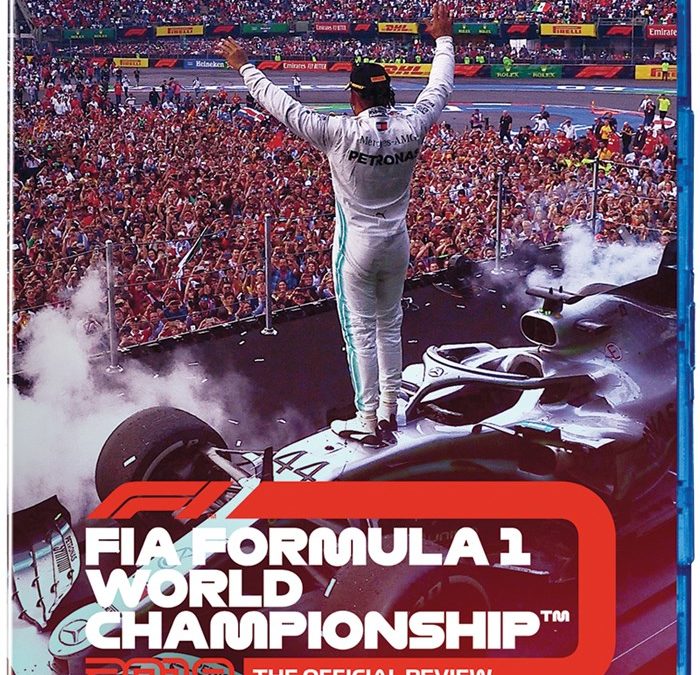
THE OFFICIAL REVIEW OF THE 2019 FIA FORMULA ONE WORLD CHAMPIONSHIP™
- 21 races.
- Record-breaking wins.
- An unforgettable year of Formula 1®
Relive the thrills, spills and battles of the 2019 FIA Formula One World Championship™ with hours of intense racing action from a fiercely-fought season, featuring commentary from Martin Brundle and David Croft.
This edge-of-your-seat review includes on-board footage of every pole position lap, new angles of crashes and additional qualifying coverage – plus loads of bonus features. Get ready to relive the heart-pounding pinnacle of motorsport:
Hamilton and Mercedes make it six
Enjoy the triumphs and tribulations as Lewis Hamilton wins a sixth FIA Formula 1
® Drivers’ World Championship, to move within one of the great Michael Schumacher. And see Mercedes become the first team in history to win both the FIA Formula 1
® Drivers’ & Constructors’ World Championships for the sixth time in a row.
Charles Leclerc enters the scene
A star is born as Ferrari new boy Charles Leclerc takes his first F1
® victories and clinches the Pole Position Trophy ahead of Lewis Hamilton, Valtteri Bottas and Sebastian Vettel.
Rookies rise to the challenge
See the new faces on the 2019 F1® grid lay down the gauntlet, with the likes of Alex Albon, Lando Norris and George Russell showing just why they deserve their seats in F1®.
Triumph and heartbreak
Strap in for a last-gasp pass in Austria, craziness in Germany, a Monza masterclass, brilliance in Brazil, three new podium finishers and much more…
McLaren begin their comeback
McLaren shine once again with incredible drives from rookie Lando Norris and Carlos Sainz’s best season yet, capped off with his first-ever F1® podium – from the back of the grid, no less.So get comfortable, relax if you can, and relive all the emotion and excitement of the 2019 FIA Formula One World Championship™.
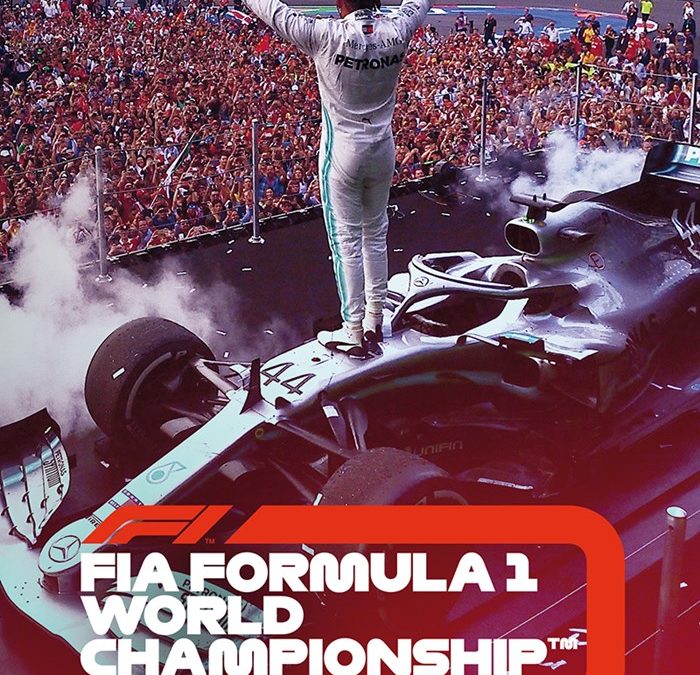
THE OFFICIAL REVIEW OF THE 2019 FIA FORMULA ONE WORLD CHAMPIONSHIP™
- 21 races.
- Record-breaking wins.
- An unforgettable year of Formula 1®
Relive the thrills, spills and battles of the 2019 FIA Formula One World Championship™ with hours of intense racing action from a fiercely-fought season, featuring commentary from Martin Brundle and David Croft.
This edge-of-your-seat review includes on-board footage of every pole position lap, new angles of crashes and additional qualifying coverage – plus loads of bonus features. Get ready to relive the heart-pounding pinnacle of motorsport:
Hamilton and Mercedes make it six
Enjoy the triumphs and tribulations as Lewis Hamilton wins a sixth FIA Formula 1
® Drivers’ World Championship, to move within one of the great Michael Schumacher. And see Mercedes become the first team in history to win both the FIA Formula 1
® Drivers’ & Constructors’ World Championships for the sixth time in a row.
Charles Leclerc enters the scene
A star is born as Ferrari new boy Charles Leclerc takes his first F1® victories and clinches the Pole Position Trophy ahead of Lewis Hamilton, Valtteri Bottas and Sebastian Vettel.
Rookies rise to the challenge
See the new faces on the 2019 F1® grid lay down the gauntlet, with the likes of Alex Albon, Lando Norris and George Russell showing just why they deserve their seats in F1®.
Triumph and heartbreak
Strap in for a last-gasp pass in Austria, craziness in Germany, a Monza masterclass, brilliance in Brazil, three new podium finishers and much more…
McLaren begin their comeback
McLaren shine once again with incredible drives from rookie Lando Norris and Carlos Sainz’s best season yet, capped off with his first-ever F1® podium – from the back of the grid, no less.So get comfortable, relax if you can, and relive all the emotion and excitement of the 2019 FIA Formula One World Championship™.
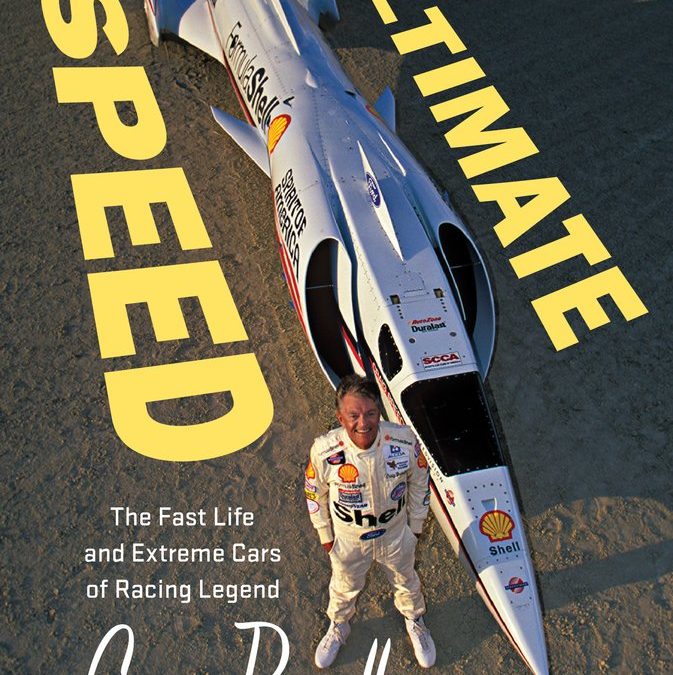
The exciting, true story of an ordinary guy building extraordinary machines in his garage and racing them in the most dangerous game in the world.
An L.A. hot-rodder with a high school education, a family to support, and almost no money, Craig Breedlove set out in the late 1950s to do something big: harness the thrust of a jet in a car. With a growing obsession that would cost him his marriage, he started building in his dad’s garage. The car’s name was Spirit of America. Through perseverance and endless hard work, Craig completed Spirit and broke the land speed record on the Bonneville Salt Flats, setting a new mark of 407 mph in 1963. He went on to be the first person to drive 500 and 600 mph, breaking the land speed record five times. In the early 1970s he turned to rockets and set an acceleration record at Bonneville that stands to this day. He built a jet car in the 1990s, Spirit of America–Sonic Arrow, to go head to head against Britain’s ThrustSSC to be the first to Mach 1. Craig’s subsequent crash at 675 mph remains the fastest in history. Even today, at the age of eighty, he is going strong with plans for yet another Spirit of America racer. The ultimate goal: 1,000 mph.
Ultimate Speed is the authorized biography of Craig Breedlove, with a foreword by Craig himself. A candid revelation of one of motorsports’ most interesting figures, the book is based primarily on countless hours of interviews with Craig and dozens of people connected to his life.

San Diego enjoys a long and storied race car and drag racing history, and the Bean Bandits are a huge part of that heritage. Yet their story remains buried in plain sight. Told here in photographs garnered from private, personal, and historical collections, the 1950s pioneering exploits of Bean Bandits leader Joaquin Arnett and his contributions to that racing history come to life. The San Diego native led his Bean Bandits to over 300 wins and several land speed records while competing against other local clubs, like the Prowlers, Oilers, Roadsters, and Roadrunners. Eventually, the Bean Bandits’ streamliners set records on the Bonneville Salt Flats. Arnett won the first National Hot Rod Association (NHRA) Championship in 1953, was named to the International Car Racing Hall of Fame in 1992, and was awarded an NHRA Lifetime Achievement Award in 1994. Arnett and his Bean Bandits’ car also graced the cover of Hot Rod magazine’s special drag strip issue in 1953.

A new edition of the universally acclaimed out-of-print 1997 book is lightly edited & completely redesigned in colour throughout. This classic of motor racing celebrates the life and achievements of Jim Clark (1936-1968), World Champion 1963 and 1965. A royalty on every copy sold in Britain (price GBP22.50) will be donated to the Jim Clark Trust. Patrons Sir Jackie Stewart, David Coulthard, Dario Franchitti and Allan McNish celebrate the new edition, Sir Jackie describing Clark as “…the best racing driver I ever raced with and against”. Three times Le Mans winner Allan McNish: “A modern driver winning the British Grand Prix, racing in Formula 2, then at Indianapolis would be unthinkable.” David Coulthard: “There is no question that Jim’s achievements and Jackie Stewart’s input were fundamental to me becoming a professional racing driver.” Eric Dymock details Clark’s place in motor racing history and total command of Formula 1, portraying him as an individual, nail-biting and insecure, yet the greatest driver in any sort of motor sport.Celebrating the life and achievements of Jim Clark (1936-1968), Formula 1 World Champion 1963 and 1965, this book details his place in motor racing history and his total command at the wheel. From a Scottish farming family, Clark rewrote the annals of American racing at Indianapolis, second at his first attempt in 1963, winning in 1965. Seemingly equal to the odds of the most dangerous eight years at the top of motor racing, Clark died in an unlikely accident in a minor race at Hockenheim on April 7 1968. Genius at the wheel was not enough. Rivals’ campaigns for safety thereafter saved countless lives on and off the track.

Visit any VW show and what do you find? Correct – wall-to-wall Campers. Interest in the numerous conversions offered over the years spirals ever-upwards as do asking prices for even the most dilapidated examples of the first three generations and 40-years of VW Bus conversions. But are there books to match? No – not, that is, until VW Bus – 40 years of Splitties, Bays & Wedges was conceived.
As a direct consequence of the lack of print available, author Richard Copping has collected a wealth of contemporary brochures from all the leading converters, knitted them together and produced a unique and vibrant story of the VW Camper from the first and often rustic conversions of the 1950s to the sophisticated homes on wheels of the late 1980s.
Stripping out the original text, Richard has carefully replaced it with his own lively yet informative story – while carefully retaining both the popular look and nostalgic feel of the age. From the untangling of the many stories that contributed to VW Camper history to a restorer‘s dream of detailed specifications and from the quirkiest of marketing strategies amazingly and endearingly primitive in the 1950s to suavely sophisticated in the latter days, if the word Camper is in it, it’s covered.
The meticulous reproduction of advertising brochures, many of which can easily be the best part of 50-years old, make this a hard to put down coffee table volume for some – a book with very much in vogue nostalgic visual appeal. For others, the lure of a lively and informative story peppered with carefully detailed pictures will ensure the book is a useful reference to visit over and over again.
This extensive collection of rarely seen advertising material provides a unique background to a much-needed book, designed to delight the multitude of VW Camper fans far and wide.

Drag racing is a very regulated sport. In the history of the NHRA, IHRA, and other sanctioning bodies, many classes existed in an effort to make sure the cars racing against each other are as equal as possible. It is a noble, if not futile, pursuit. You have two cars facing off that have very similar statistics in terms of weight, transmission type, fuel type, estimated horsepower, and all other sorts of measurables. The byproduct is that often the races that were “fair” were not the races that the fans wanted to see.
During the golden age of drag racing, fans didn’t care as much about class racing as much as they wanted to see scores settled, rivalries battled, and interesting match-ups. There were the manufacturer rivalries, Ford versus Chevy, Chevy versus Mopar, Mopar versus Ford, as well as numerous driver rivalries. Match races were also a great way to feature wildly popular cars that no longer had a class in which to compete, yet the fans still wanted to see them. So popular and intense were these races that many track promoters didn’t bother to promote class racing at all. Instead, they used the match races as headliners, similar to the marquee at your local arena or a billboard in Las Vegas, all resulting in putting more fans in the stands. And the drivers loved it too. Although the prize money for national events was fairly average for the day, the extra appearance fees and prize money to lure the most popular match racers to events increased the driver’s take exponentially. Many of the most popular pro drivers quit class racing altogether just to go match racing.
Veteran drag race author Doug Boyce tells the tale of the history of match racing through the cars, the drivers, the events, the classes, the rivalries, and everything else that was fun about match racing during the golden era. It’s all here, complemented by wonderful vintage photography provided by fans and professionals in attendance. If you are a fan of any class of drag racing, from any era, Match Race Mayhem is a fun addition to your racing library.



